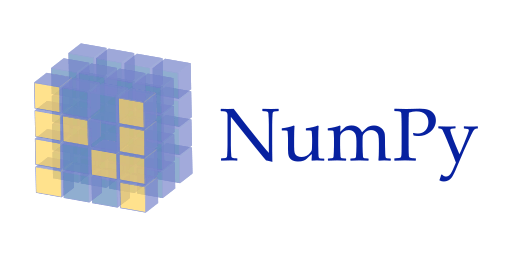Top 10 machine learning libraries in python
Top 10 machine learning and deep learning libraries in python
Table of contents
- Python a programming language grown in recent years specially for machine learning and deep learnings. Tons of python libraries are available for performing machine learning and deep learning related works. English like commands make it accessible to beginners and experts. Main competitor of python is R. Here we will discuss about top ten python machine learning and deep learning libraries. These libraries can be used by programmers of all experience levels for tasks involving ML and AI, data science, image and data manipulation, and much more.
- Numpy
- It is an open source python library widely used to perform various mathematical operations on different matrices. Numpy along with other libraries used to capture M87 Black Hole by event horizon telescope. NumPy arrays require far less storage area than other Python lists. NumPy is a great option to increase the performance of machine learning models without too much complex work required.
- Pandas
- Another top Python library on the in data science world is Pandas. Pandas provide dataframe which analyzes and manipulates data, and it enables developers to easily work with structured multidimensional data and time series concepts. Developed on top of NumPy, pandas is a quicker and easier-to-use library. Pandas provide data reading and writing capabilities using various sources such as Excel, HDFS, and others
- Matplotlib
- A popular free and open-source python library which is used to create static, animated, and interactive visualisations in Python. It was developed to replace by MATLAB statistical language.
- Scikit-Learn
- Keras
- Seaborn
- SciPy
- OpenCV
- PyTorch
- Gensim
Python a programming language grown in recent years specially for machine learning and deep learnings. Tons of python libraries are available for performing machine learning and deep learning related works. English like commands make it accessible to beginners and experts. Main competitor of python is R. Here we will discuss about top ten python machine learning and deep learning libraries. These libraries can be used by programmers of all experience levels for tasks involving ML and AI, data science, image and data manipulation, and much more.
Numpy
It is an open source python library widely used to perform various mathematical operations on different matrices. Numpy along with other libraries used to capture M87 Black Hole by event horizon telescope. NumPy arrays require far less storage area than other Python lists. NumPy is a great option to increase the performance of machine learning models without too much complex work required.

Here are some of the main features of NumPy :
High-performance N-dimensional array object
Data cleaning/manipulation
Shape manipulation
Pandas
Another top Python library on the in data science world is Pandas. Pandas provide dataframe which analyzes and manipulates data, and it enables developers to easily work with structured multidimensional data and time series concepts. Developed on top of NumPy, pandas is a quicker and easier-to-use library. Pandas provide data reading and writing capabilities using various sources such as Excel, HDFS, and others
 Here are some of the main features Pandas:
Here are some of the main features Pandas:
Indexing of data.
It has descriptive, quick, and compliant data structures
Merging/joining of datasets.
Data manipulation and analysis.
Matplotlib
A popular free and open-source python library which is used to create static, animated, and interactive visualisations in Python. It was developed to replace by MATLAB statistical language.

It can be easily streamlined with the Jupyter Notebook
Customise visual style and layout
Export to various file formats
Scikit-Learn
Scikit-Learn is an extension of SciPy. It was just a part of a summer project at Google which is open source and free to use. It has tons of features which helps to develop Machine Learning models at scale. Scikit-learn has a user-friendly that makes it easy for you to share and use data.

It is the best library for the reliable deployment of Machine Learning models.
Widely used as side projects and industrial projects.
Very easy to use and user friendly documentation.
Keras
Keras is a widely used framework for fast and efficient experimentation related to deep neural networks. The framework is wrapped over tensorflow which provides easy to use high level API. It is a standalone library comprehensively used for building Machine Learning or Deep Learning models that help engineers develop applications such as Netflix, Uber, and many others.

It is the best library for research work and efficient prototyping.
Its framework is portable.
It allows easy representation of neural networks.
It is highly efficient for visualisation and modeling.
Seaborn
Seaborn is another plotting library which is used with matplotlib to provide with extra feature and look. It is based on Matplotlib and includes the data structures of pandas.

It produces graphs that are more appealing than those created with Matplotlib.
It has integrated packages that are unavailable in Matplotlib.
It uses less code for visualising graphs.
It is integrated with pandas for visualising and analysing data.
SciPy
SciPy is another most popular and most used library in data science world. SciPy enables us to perform scientific computing. SciPy is based on NumPy and is also a subpart of the SciPy stack.

It is perfect for image manipulation.
It offers basic processing features for mathematical operations.
It provides effective integration for numerics and their optimisations.
It also facilitates the processing of signals.
OpenCV
OpenCV is a free and open-source platform dedicated to computer vision and image processing. This library has more than 2500 algorithms dedicated to computer vision and ML. It can track human movements, detect moving objects, extract 3d models, stitch images together to create a high-resolution image. It is used in various CCTV monitoring activities by many governments, especially in China and Isreal. Also, the major camera companies in the world use OpenCv for making their technology smart and user-friendly.

Very easy to use which is good for beginners.
Excellent explanation of various complex features in the documentation
PyTorch
PyTorch is a framework that enables the execution of tensor computations. Its free and open source project by Facebook (now Meta ) based on Torch framework. It's widely used in industrial projects by various organisation and in experimental projects. Most important part of PyTorch is that it provides an extensive API for handling the errors of neural networks.

It is popular for its speed of execution.
It is capable of handling powerful graphs.
It helps to integrate with various Python objects and libraries.
Gensim
A popular Natural Language Processing library which is free and open source. The most robust, efficient and hassle-free piece of python library to understand unsupervised semantic modelling from plain text.

Scalable statistical semantics.
Analyse plain-text documents for semantic structure.
Retrieve semantically similar documents.
Conclusion : Every library has its own positives and negatives. These aspects should be taken into account before selecting a library for the purpose of building machine learning and deep learning models. Several examples with explanation is provided with all the above libraries.
Follow me on Twitter: data4boy
Follow dataRabit on Twitter : dataRabit
dataRabit website : dataRabit

